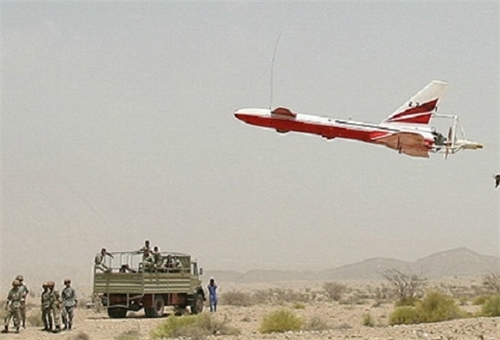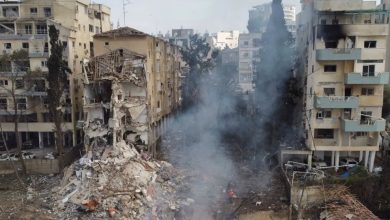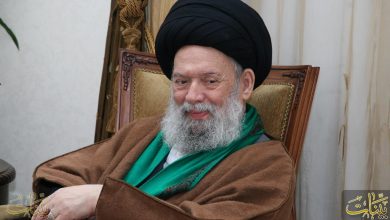A Report on Iran’s Drone Units: Army’s Online Eyes Monitoring Border Moves

As this report goes online, the Iranian army’s drone units are controlling every move not just at, but hundreds of kilometers beyond the country’s borders, wiring real-time images and data to the Army’s command centers and border units, but the capabilities of these units are not at all limited to border control and monitoring.
Most Iranians have watched the movie ‘Mohajer’, a war-time cine production based on a true story depicting the start of drone operations in Iran during the closing years of the Iraqi imposed war in the 1980s.
The Iranian armed forces actually started using Unmanned Arial Vehicles (UAVs), including drones, the same years mostly for intelligence gathering, including imaging, and bombing operations.
Over 25 years later, now the Iranian armed forces are using hi-tech drones for every possible mission, from logistics to surveillance, combat, and even suicide operations.

In the 90s and 20s, most drone operations pertained to surveillance and imaging missions, but after the Ground Force implemented its Samen Comprehensive Restructuring Plan in 2011, Army commanders realized that their UAV units are capable enough to conduct every mission and they, thus, first established Vali-e Asr Drone Group on July 5, 2011, and then its numerous subsidiary units across Iran.


The drone and UAV units of the Iranian Ground Force are monitoring and imaging all moves in these areas and wire real-time information, data and images to command centers and border units, empowering them to be fully informed of every hostile move made in areas near Iran’s borders.


Iran’s first drone, Mohajer, could fly 50km deep into hostile territories. Later Iran manufactured M2 with a flying range of 100km. Its advanced version, Shahin can fly 150km deep into the enemy territories mainly for surveillance missions. The flying range of the latest version of Shahin has been increased to 200km and now the army plans to still increase this range to 400km.
Ra’d 85 combat drone with a flying range of 100km is the specialized UAV of the Ground Force which can destroy targets with a maximum precision capability.

Army commanders say all the parts and technology for designing and manufacturing these UAVs have been indigenized and their needs are met domestically.

Iran has already downed several US drones, including an RQ-170 and a ScanEagle, through a sophisticated cyber attack. Iranian military officials have announced that they have reproduced these drones after decoding their information. Iran has released images of its reproduction of these downed drones.
Earlier this month, Lieutenant Commander of the Iranian Navy Rear Admiral Gholam Reza Khadem Biqam announced that the Iranian Navy is equipped with various types of long-range UAVs, including intelligence gathering and combat drones.
In September, Iran announced that it has started using UAVs for its air defense units as part of its broader plans for strengthening the country’s air defense capability.
Speaking to reporters on the occasion of the National Day of Air Defense here in Tehran on September 3, Commander of Khatam ol-Anbia Air Defense Base Brigadier General Farzad Esmayeeli said Iran has equipped its air defense units with Haazem drones.
Haazem is a drone designed and manufactured by Iranian air defense experts in three short, mid and long range models and for air defense missions.
The drone can be used as a target for air defense systems and also for reconnaissance missions.
The UAV can also be equipped with missiles and used for aerial bombardments as well.
Also, Esmayeeli announced in July that Iran plans to display a new UAV named Hazzem 3 in the near future.
Esmayeeli had announced in June that Iran plans to display a new drone with features and capabilities similar, but more advanced than the home-made Sarir (Throne) drones in the near future.
“The new drone named ‘Haazem 3’ enjoys the capabilities of Sarir and will be unveiled on September 1 (on the occasion of the Air Defense Day),” Esmayeeli told FNA at the time.
He further elaborated on the features and capabilities of Sarir, and said the UAV is capable of flying from all sides of its nose, enabling it to make sudden left to right moves.
He added that the drone also has a high capability in identifying and imaging targets.
Esmayeeli pointed to the missile ammunition of Sarir, and said, “These missiles enable Sarir to confront and combat multiple targets, including invading UAVs.”
Esmayeeli had informed the media in April that Sarir is a long-range, long-endurance radar evading air defense drone.
Esmayeeli said that the Iranian Army is set to stage a massive military maneuver in the second half of the current Iranian year (started March 21).
He said that the Modafe’an-e Aseman-e Velayat 5 (Defenders of the Velayat Skies 5) drills will be held in the second half of this year.
“In this maneuver, the Haazem 3 drone will be unveiled. High capability in reconnaissance and aerial combat are among the features of this drone,” Esmayeeli said.







